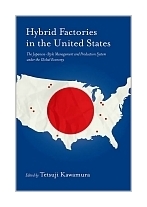|
||
• wydawnictwa polskie
• Zamów informacje o nowościach z wybranego tematu • kontakt
• Cookies na stronie |
HYBRID FACTORIES IN THE UNITED STATESTETSUJI KAWAMURAwydawnictwo: OXFORD UP , rok wydania 2011, wydanie Icena netto: Hybrid Factories in the United States:The Japanese-Style Management and Production System under the Global EconomyHybrid Factories in the United States elucidates the real advantages and weaknesses of the Japanese-style management and production system (JMPS) in the United States and elsewhere in the globalized economy. To assess the success of the "hybridization" dynamics of JMPS abroad, the editor and authors developed their own "hybrid-analysis" model, which has been used successfully around and globe for decades, and has been recognized as a major research framework for elucidating the study of international transferability of management and production systems in general. In very concrete ways and attentive to regional differences, the authors' hybrid-analysis methods identify which aspects of JMPS will inevitably change and which should be sustained. Tetsuji Kawamura and his team have provided a crucial and comprehensive resource not only for anyone interested in the Japanese story, but also for those concerned about the future of American manufacturing industries, for the investigation of Japanese transplants provides an invaluable perspective of the real dimensions of major management innovations of U.S. industries. Table of Contents: Chapter 1 Introduction: The Japanese-style Management and Production System in
the U.S.A (Tetsuji Kawamura) Chapter 2 The Japanese Management System and Corporate Strategies (Hiroshi Itagaki) Chapter 3 Hybrid Analysis of Japanese Transplants in the U.S.A Chapter 4 Specific Cases of Hybrid Factories in the United States Chapter 5 Situations and Cases in Mexico and Canada Chapter 6 Conclusion and Prospects (Tetsuji Kawamura) 352 pages, Hardcover Księgarnia nie działa. Nie odpowiadamy na pytania i nie realizujemy zamówien. Do odwolania !. |


